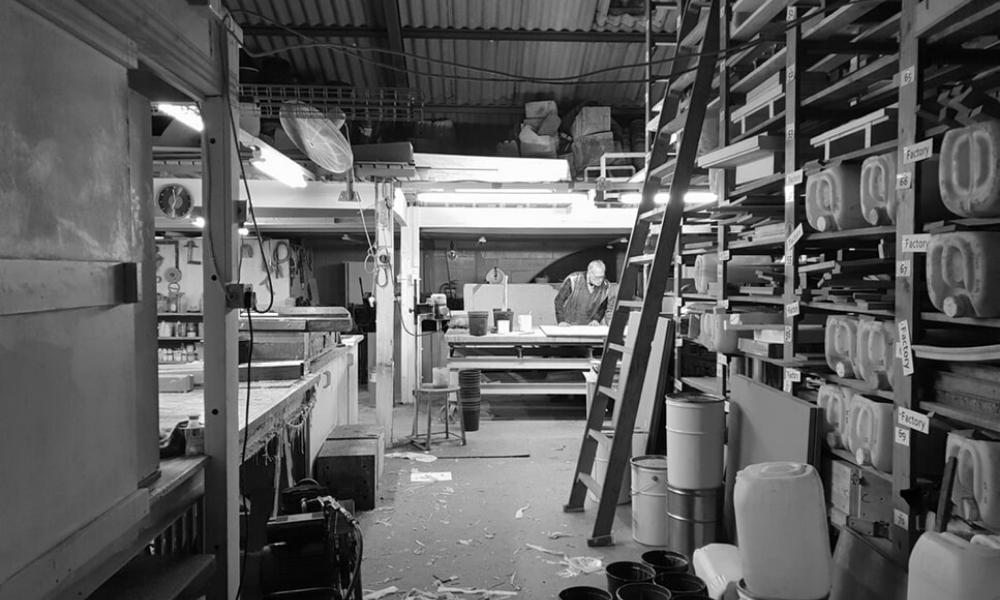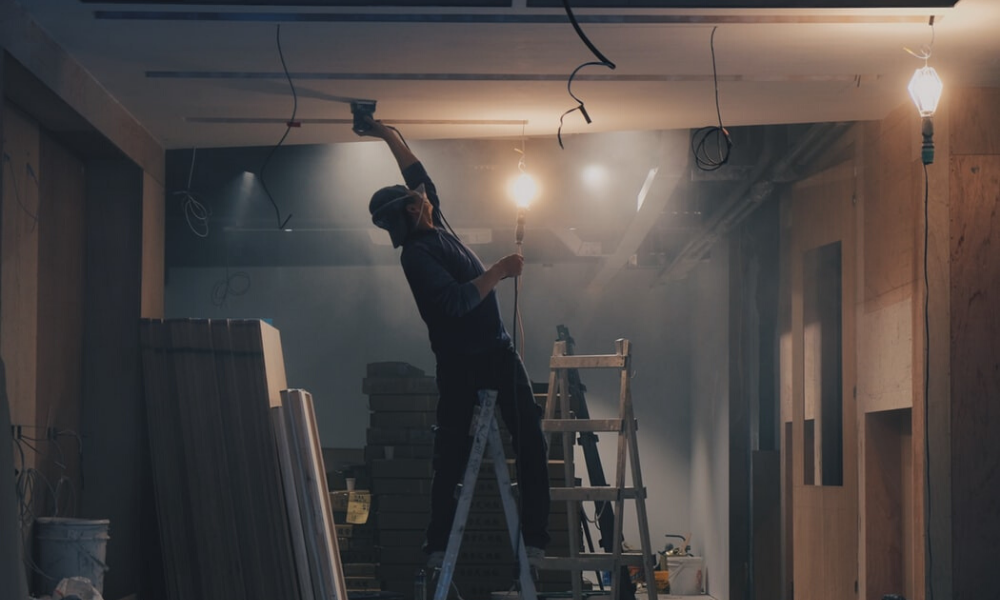Common Mistakes Everyone Makes With Aluminium Ladder

Aluminium ladder is an indispensable item in our home, nowadays. It helps you to get an item on top, changing the bulb, repair the curtain or put something on the floor causing difficulty, which saves a lot of time and effort. Therefore, the aluminium ladder is a lightweight item, it allows positioning in many forms, such as double, straightening, bending, etc. in accordance with our various purpose.
If you frequently face such difficulties as expressed above, or, even some completely different issues that need the utilization of a ladder, don’t hesitate to get one. These ladders don’t take up an excessive amount of space nor are they bulky and a burden. Contrary to several people’s beliefs they’re really quite handy.
We should check up on features like safety measures, steppers size, rubber matting, and quality standards as OSHA, number of steps, weight capability, area it uses, and sturdiness and certify the ladder is compatible along with your activities.
Every year, there is a number of emergency room-treated injuries caused by falls from ladders, according to the WHO. And you don’t have to rumble far to get hurt, most of the falls are from a height of 10 feet or less.
Still, aluminium ladders are essential DIY tools to so many projects and tasks, from painting your space, cleaning gutters to hanging decorative items. So don’t become static, stay safe by steering clear of the accident including mistake you make using a ladder.
Choosing The Wrong Type

Aluminium ladder safety starts with the structure itself. As ladders come in different types, weight capacity and material. Choosing one that is not suitable for your work can lead to a severe injury, for example, a low capacity step stool instead of a higher capacity frame ladder to replace a curtain or an aluminium model near electrical lines where a non-conductive fiberglass ladder should be used. You must consider the project, environment, and weight of the material you will carry while on the ladder and choose the best ladder for the work.
The Height Factor

Generally, a step stool or a step ladder is ideal for indoor projects requiring a lift of two to eight feet. Whereas as a scaffolding ladder is articulated for outdoor projects requiring a boost of 14 feet or more. But every type of ladder varies in height and selecting a ladder that’s too short or tall for your height cam tempt you to stand on tiptoes or bend down for work area, which could make ladder unstable and cause a fall. Whenever you buy ladder, remember that a six feet person can only reach four feet higher than the ladder height. So you need a five feet ladder to reach a surface nine feet above the ground.
Uneven or Smooth Surface

Think twice before setting up your ladder on a smooth or uneven surface like a bed, freshly waxed floor, or a wet driveway. The feet at the ladder base could move as you shift your weight around the rungs, causing the ladder to slide out from your reach. For maximum ladder safety, set up it on a solid, level and non-slippy surface that allows all the feet of ladder to make contact with the ground or floor.
Leaving Locking Device Unlocked

There is no need to lock your ladder for a quick wall décor hanging, right? Wrong! If you leave you to ladder lock unlocked, there is a possibility the front and rear of the ladder could close in on itself, jerking you forward or backward. To ensure that your ladder stays open, engage the locking mechanism before you step up.
Using Extension Ladder Too Close To The Wall

Unlike a step or frame ladder, which does not have any supporting structure to stay upright, the extension ladder must lean against a structure like a wall and then secured to upper support before using it. But the angle between the ladder base and the wall should not be too steep as the ladder could tilt backward as you climb up.
Fails To Maintain Less than Three Points of Contact

Many of the users step up on the ladder with both hands full of tools, only to throw off balance and potentially fall down. Either you are climbing up, down or standing on a ladder, always maintain three points of contact — two-hand one foot or two feet and one hand to keep you balanced.
Leaning Too Far Away From The Ladder

This is the most common reason for falling down. As we try to do work out of our reach. You positioned your ladder a little too far to the left or right of the intended working area and now you are stretching your arm or leaning your body beyond the ladder to reach it. This can be a bad move! Overreaching while being on a ladder can tip it over and send you crashing. While standing on a ladder, position yourself with the buckle of your belt is between the steps. If you can’t reach to your targeted area from that position, don’t stretch yourself; come down and reposition the steps to maintain ladder safety.
Standing on the Top Step

Every ladder should be labeled with the highest safe standing level; stepping above that rung makes the ladder unstable and increase the chances of falling down. In general, avoid standing on the uppermost platform of the ladder or the two steps below it to keep your center of gravity lower and maintain higher stability. If you can’t comfortably reach the desired working area, you need a taller ladder.
Bringing Someone To Help

If you bring someone to help or to get tools, the ladder is likely to buckle and throw one or both of you backward. With the exception of two-sided ladders, those are designed to support two people, one on the front and the other on the rear set of rungs, otherwise, there should only be one person on a ladder at a time.
Keeping Loose Tools On Rungs

As convenient as it may seem to stash spanner, hammer, paintbrush can on the rung above you, one wrong move can land you on the floor or if these tools are kept above your head could land on top of you, delivering a blow to the head.
If your ladder doesn’t have a tool tray or a tool belt, a hoist used to lift things up a ladder.
Leaving a Nearby Door Unlocked

When a door opens, a ladder nearby will close or tip over and send the person thereon flying. Whereas it’s best to avoid putting in place ladders close to doorways if you want to position your ladder close to a door, lock it and either place up a sign warning others to not use it or have a helper guard it in order that nobody will open the and unwittingly knock down the ladder.
Using Extensible Tools

A telescoping paint roller or an extendable duster can cause a nasty spill if it catches on one among the rungs, jostles the ladder, and causes you to lose your footing and fall. Protracted tools that also need heaps of leverage, like a lever, are even more threatening to balance. Avoid using tools with extension poles once atop a ladder; with the correct ladder height and proper placement close to the workspace, you won’t want the accessorial reach of those tools.
Walking Underneath
Forget those bad luck superstitions! Walking underneath a ladder that’s being used exposes you to potential fallen objects, or you can inadvertently shift the ladder and force whoever’s atop it to take a dive. Always skirt an open ladder to protect yourself and the person using it.
If you are looking for a brand that can provide you highly safe ladders to use, EQUAL is one of them. They are considered as the best choice for online purchases.
Some Common Types of Ladder to Buy
There are a lot of uses for an aluminium ladder than simply changing light bulbs, which results in there being quite a few differing kinds of ladders when you take design, purpose, and materials into consideration. We embarked on all the categories of ladders below.
Step Ladder

Step Ladder or household ladder is the most common type of ladder, it is the most popular one because of its simple design and easy usability. These ladders are self-supporting, so you can take it where you need it. It consists of two sets of rungs that are evenly spaced with a top step that connects the two together.
You can either use one or both sides for climbing up or down, depending on the design. However, you can find models where you can only use one side. These are known as simple front step ladders. The other side is just for support.
There is a spreader that defines the limit of how far each can move out from the center. It keeps you safe when you’re stepping onto it. The bottom portion of the ladder is known as feet or shoes. They are typically made of anti-skid material.
Extension Ladder

The limitation of the household step ladder is height before the weight becomes an issue. That’s the reason where the extension ladder comes into play. It can reach greater heights which makes them an excellent product to use for outdoor where you have to reach a certain height that cannot be obtained by step ladder easily. A telescopic ladder could be a variation on this theme with the flexibleness to increase the height you wish to reach. It consists of a base and flies. The former stays on the bottom. The latter is the part that you use to extend your reach.
Unlike the step ladder, this kind isn’t independent. You’ll get to lean it against something to keep it stable. The fly can slide upward by hooks or a rope and pulley-block system. It also has the protection features of non-skid feet and even another set of hooks on top to secure its position.
Multipurpose Ladder

The multipurpose ladder combines the features of the step ladder and an extension ladder that increase its versatility. It can be self-supporting or can also lean against something stable if required. It can even stand like scaffolding depending on the project requirement. It can be a smart choice for the contractor or the person who has to work alone and versatility with ladder height.
Articulated Ladder

The articulated ladder is another type of portable ladder that can change its shape according to a project or job. It is easy to transport because of its design structure. This type of ladder contains a series of locking hinges to keep them in place. Because of this factor, they have a limited range of height. However, they are amazingly versatile that makes them worth to buy.
Telescopic Ladder

The telescopic ladder is the most modern type of ladder in this segment and my favorite too. Its design and easy usability make it unique from others. That feature people like about it is its easy portability and lightweight. So, you can carry it anywhere with extreme ease and comfort.
Content Source : equal


















Comments
Post a Comment